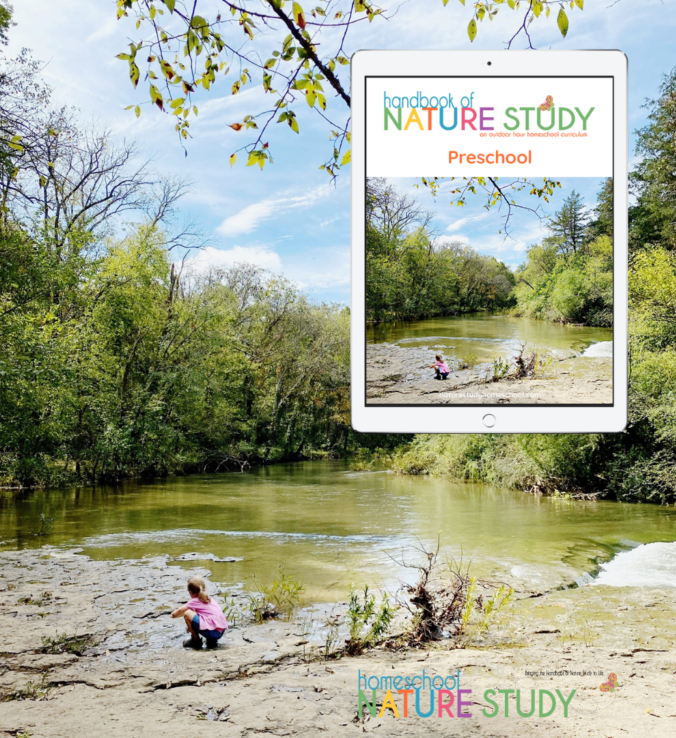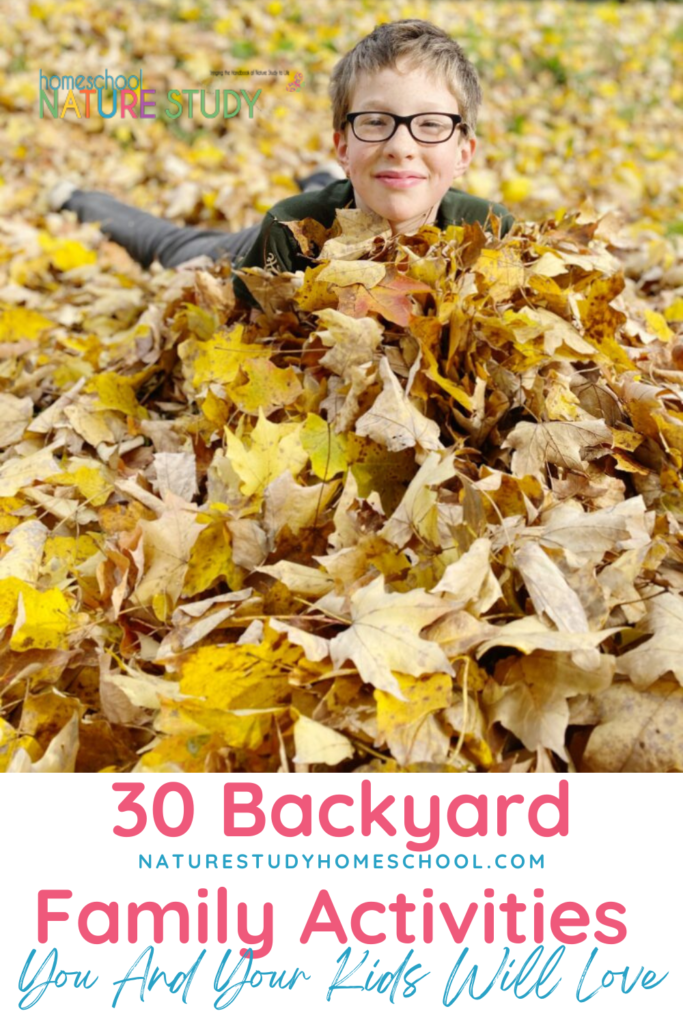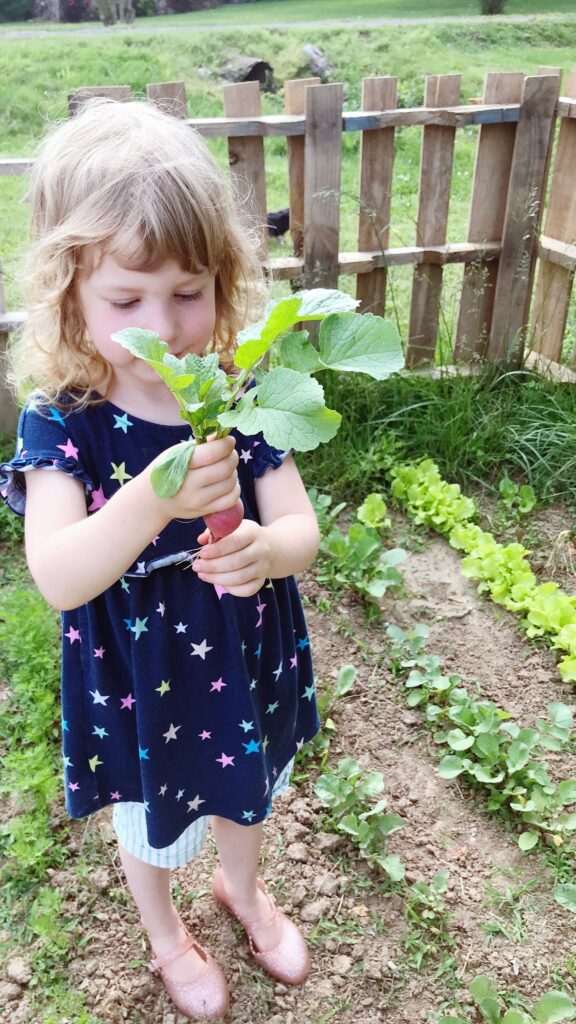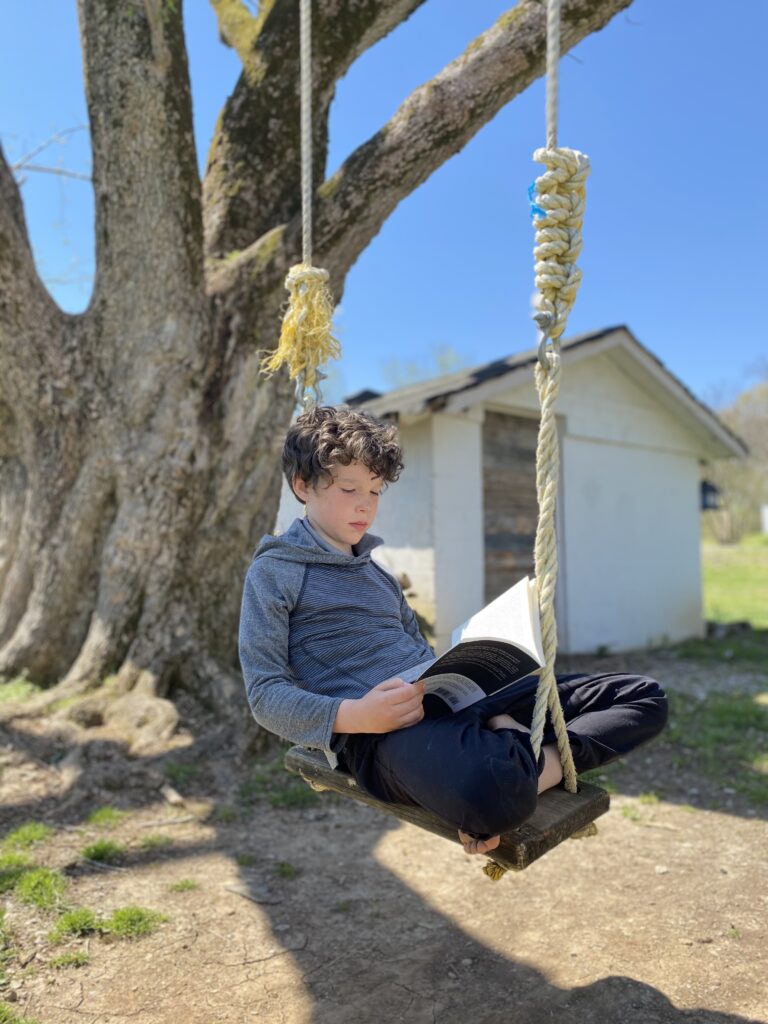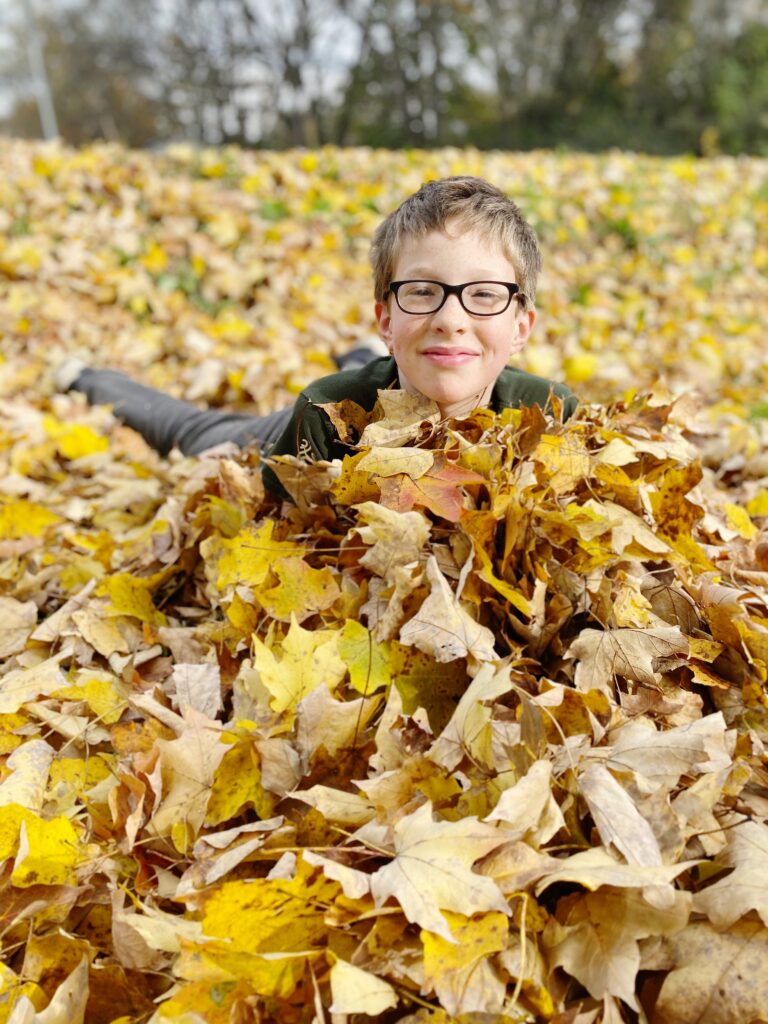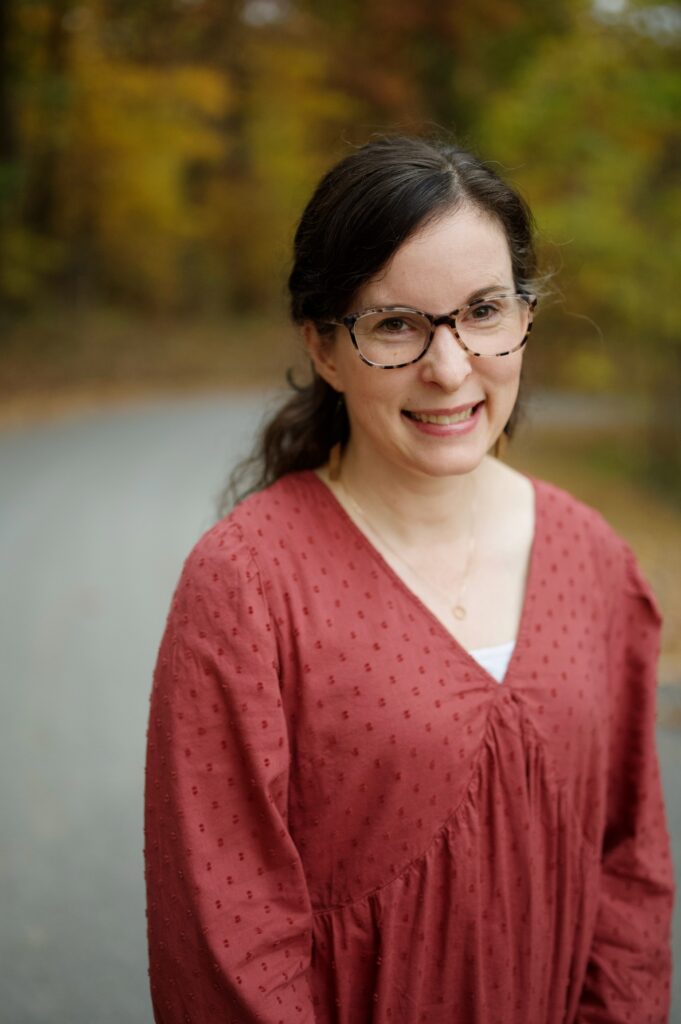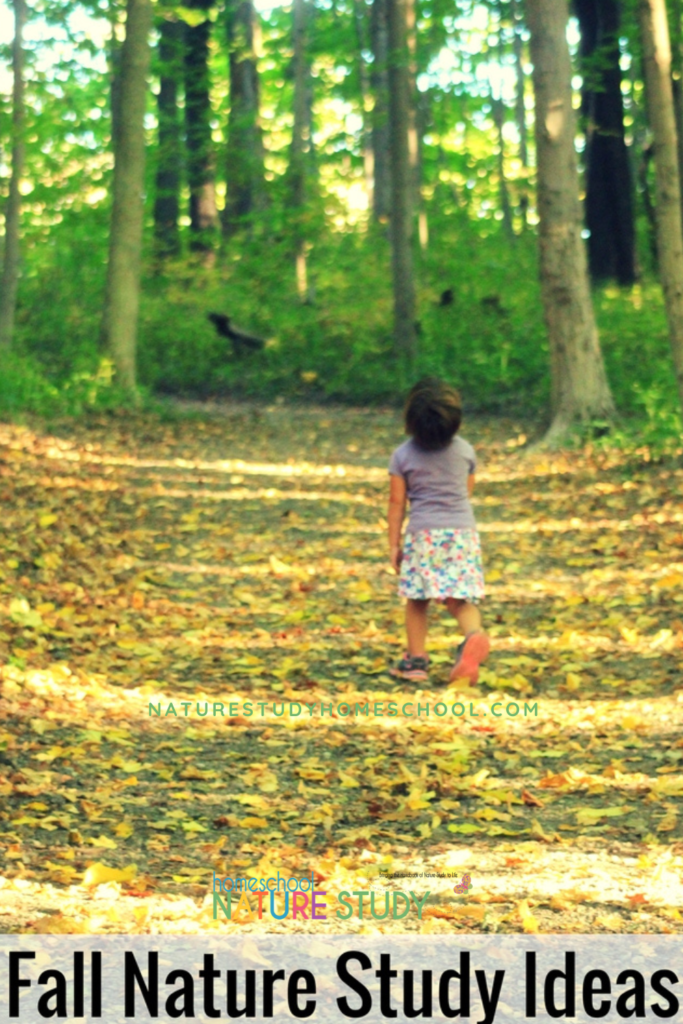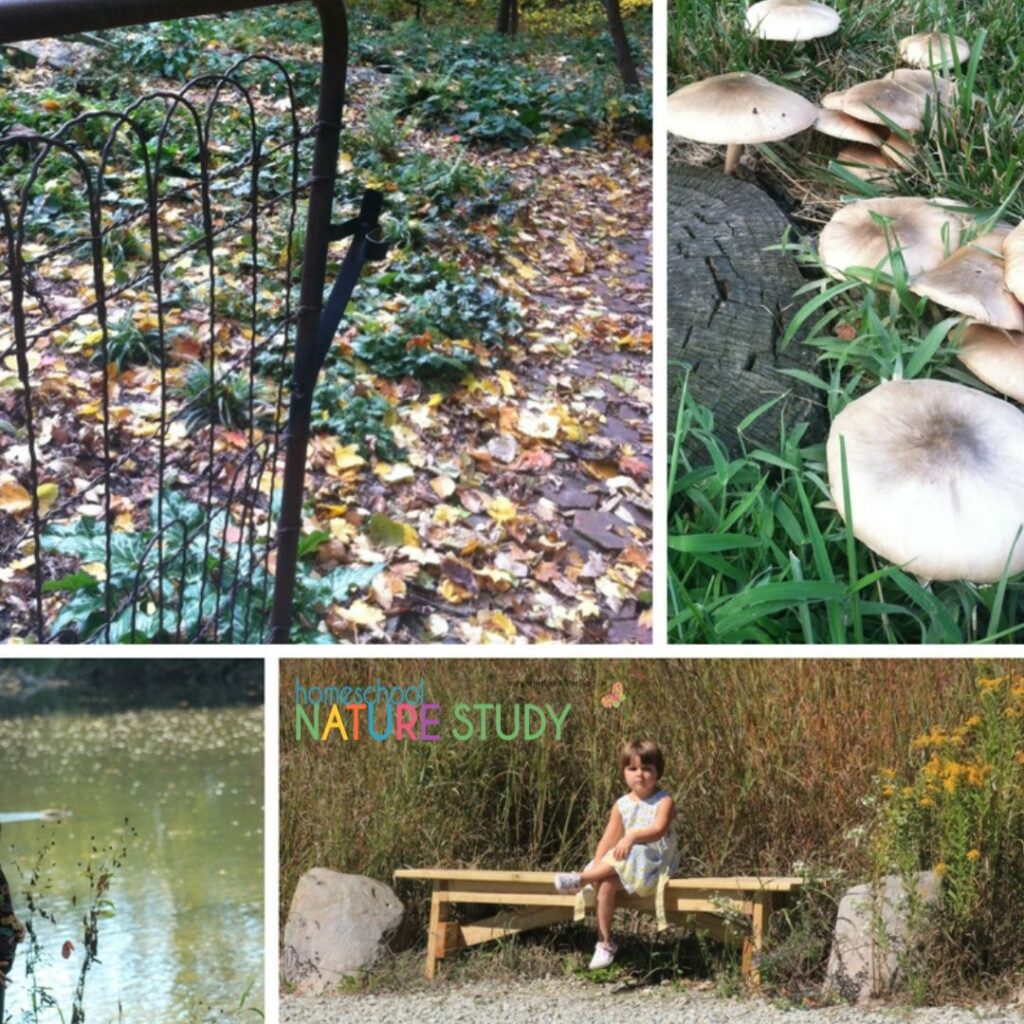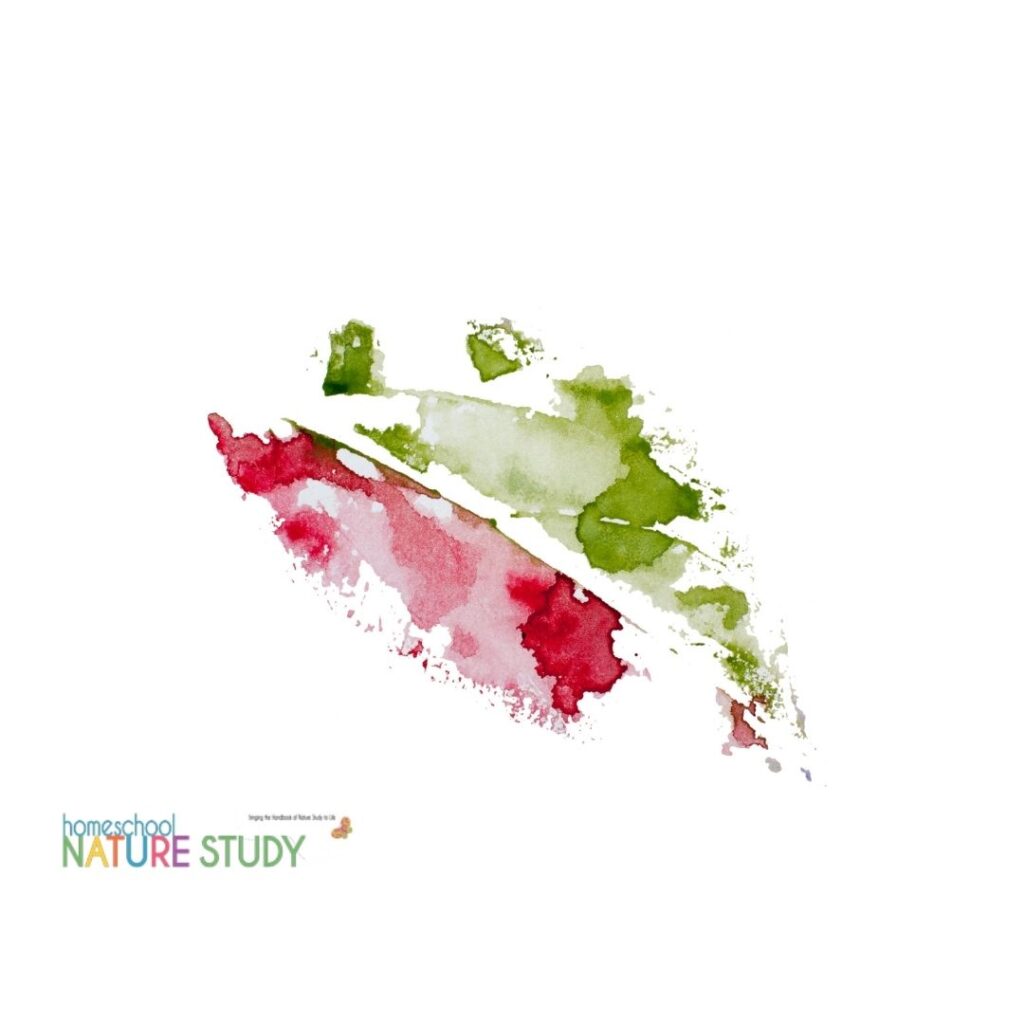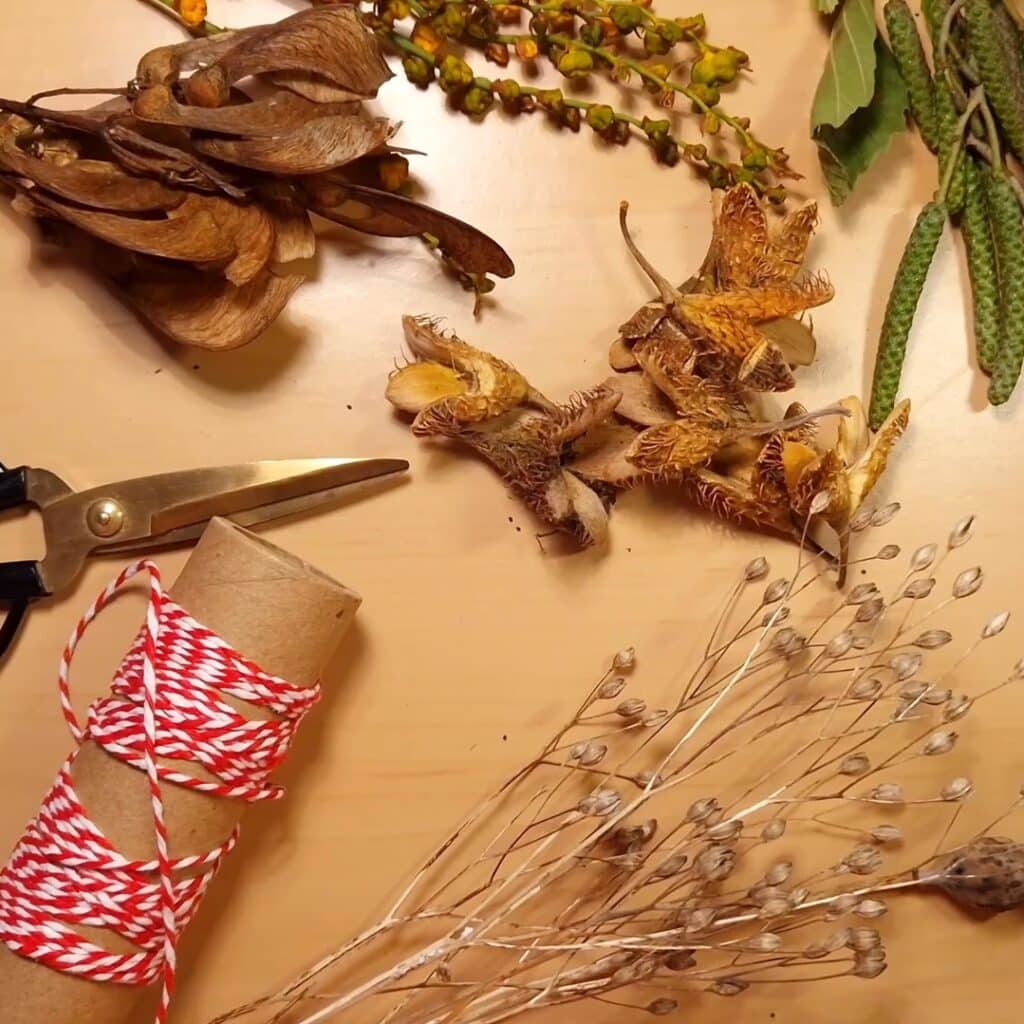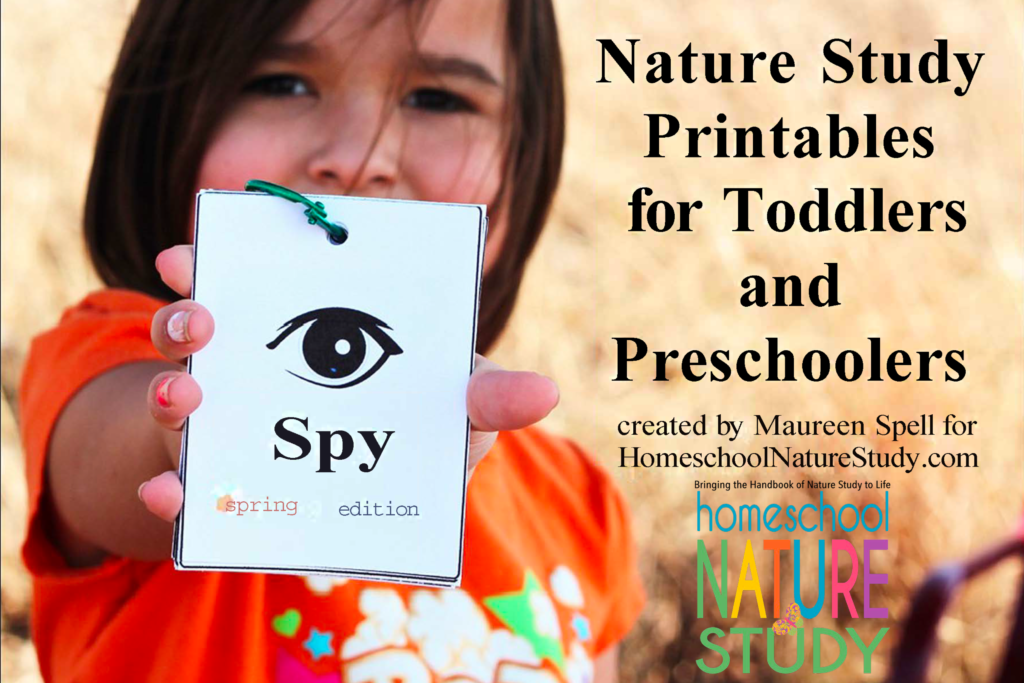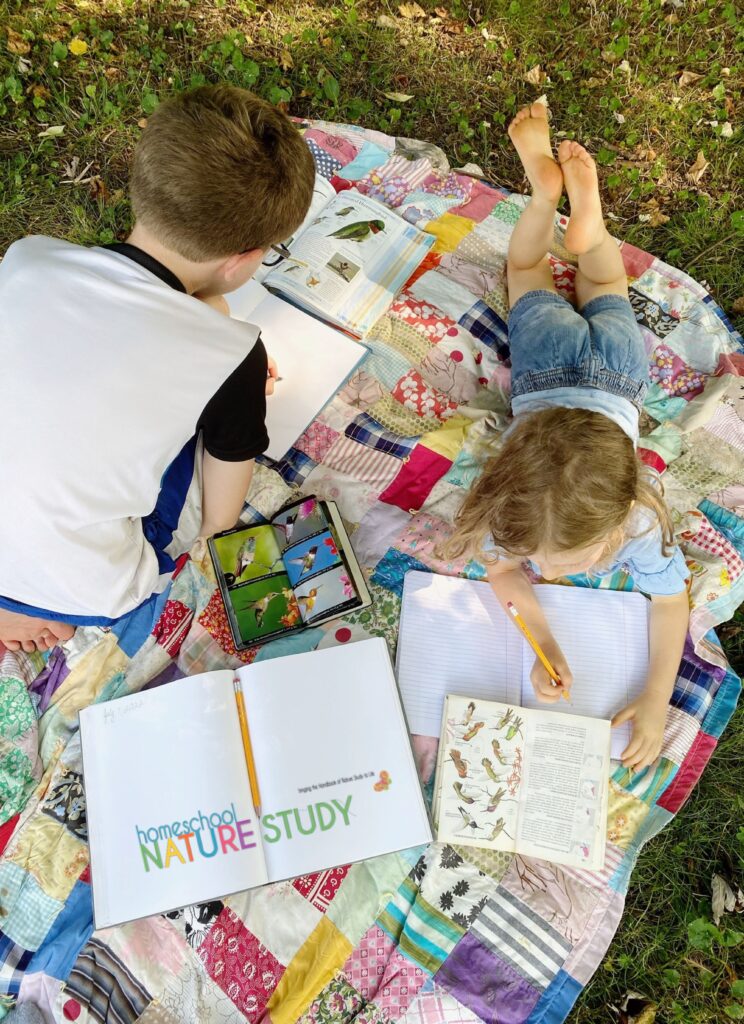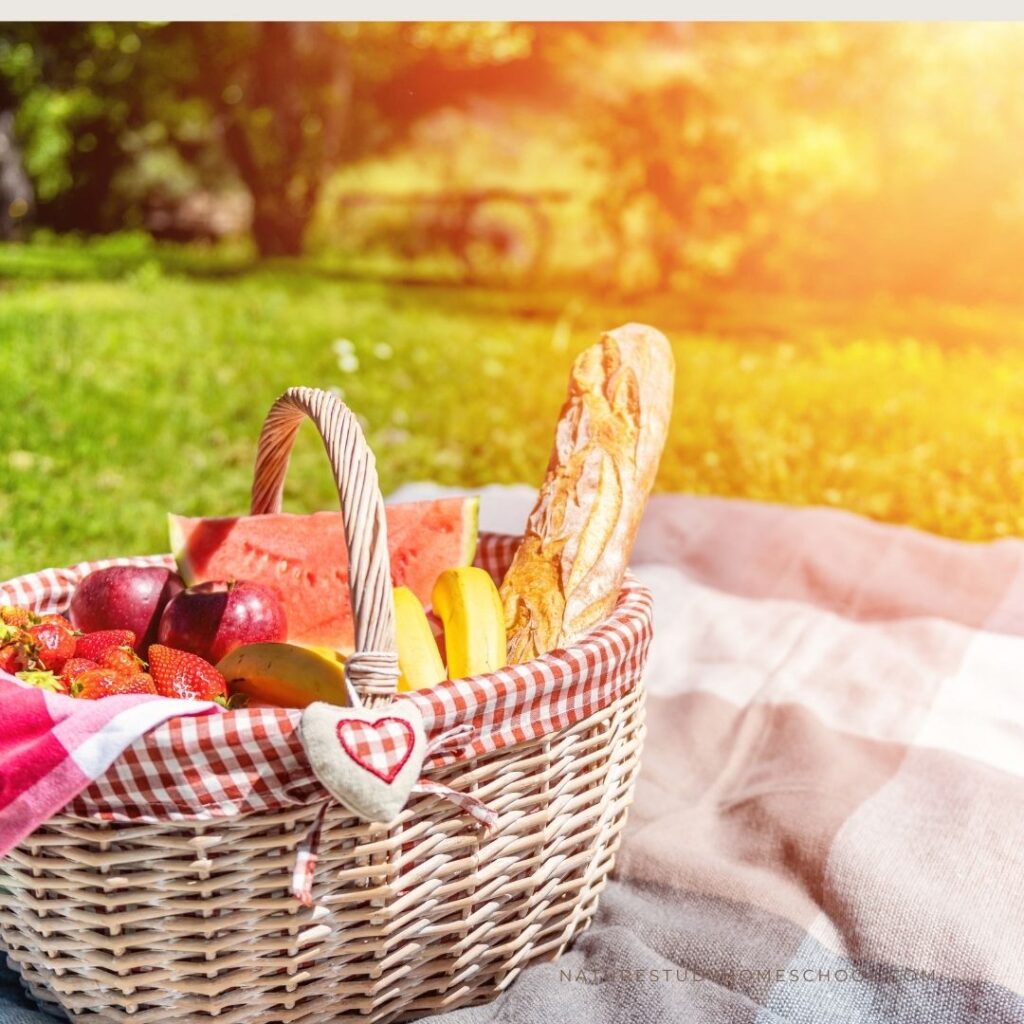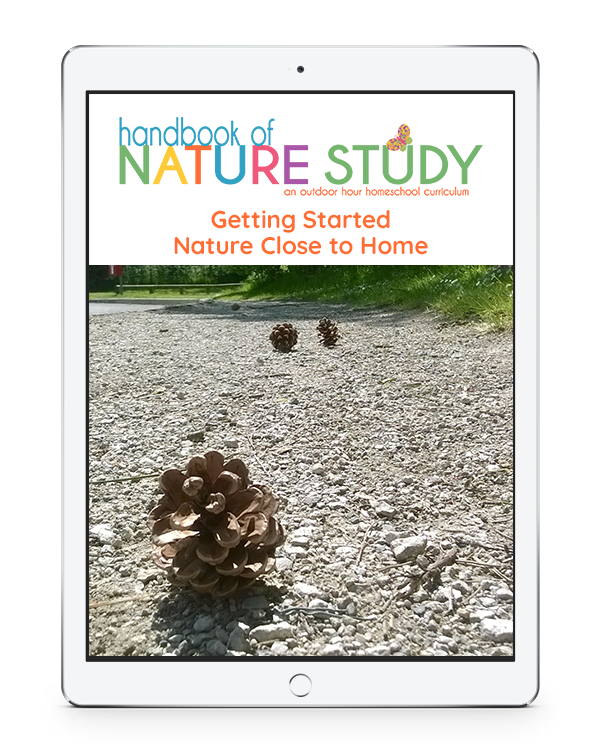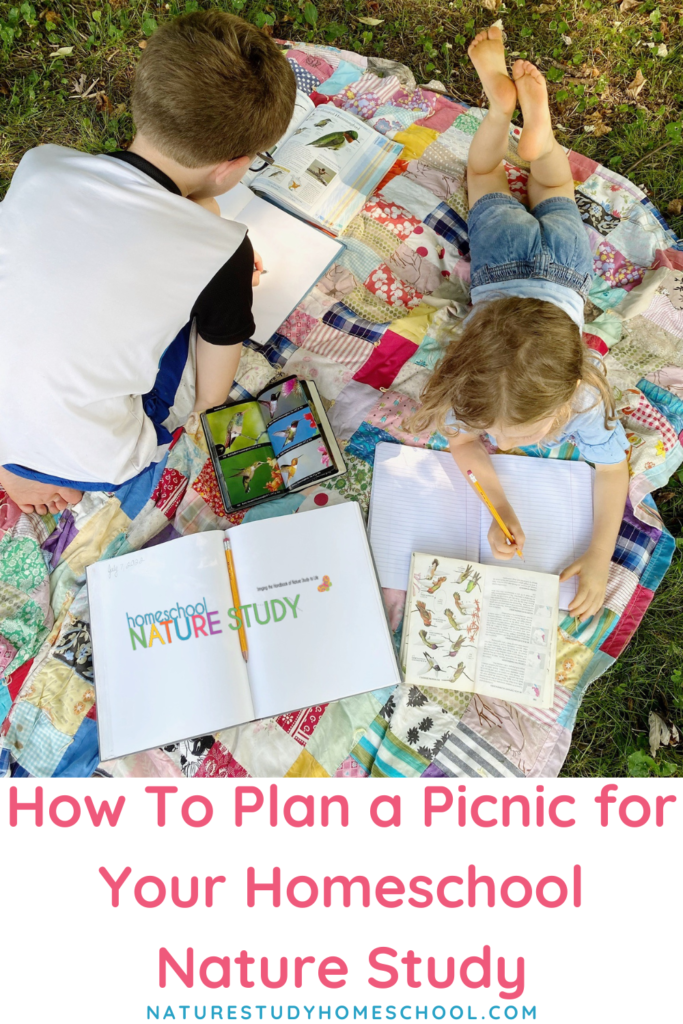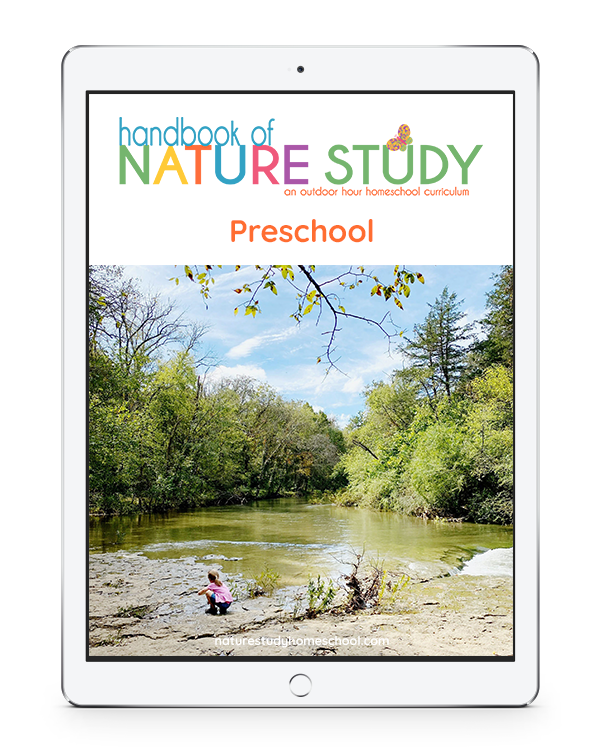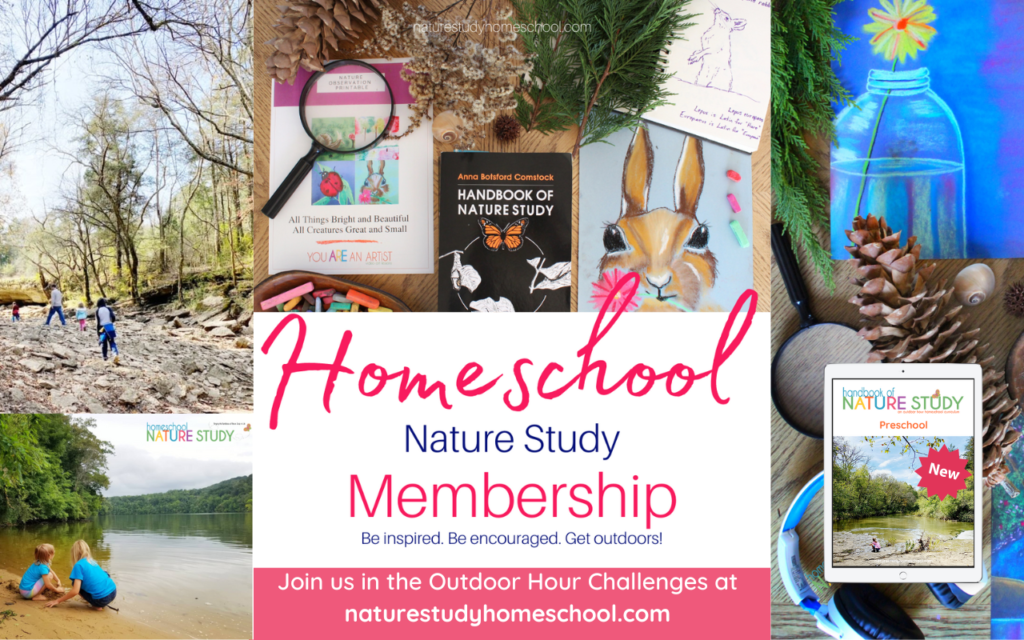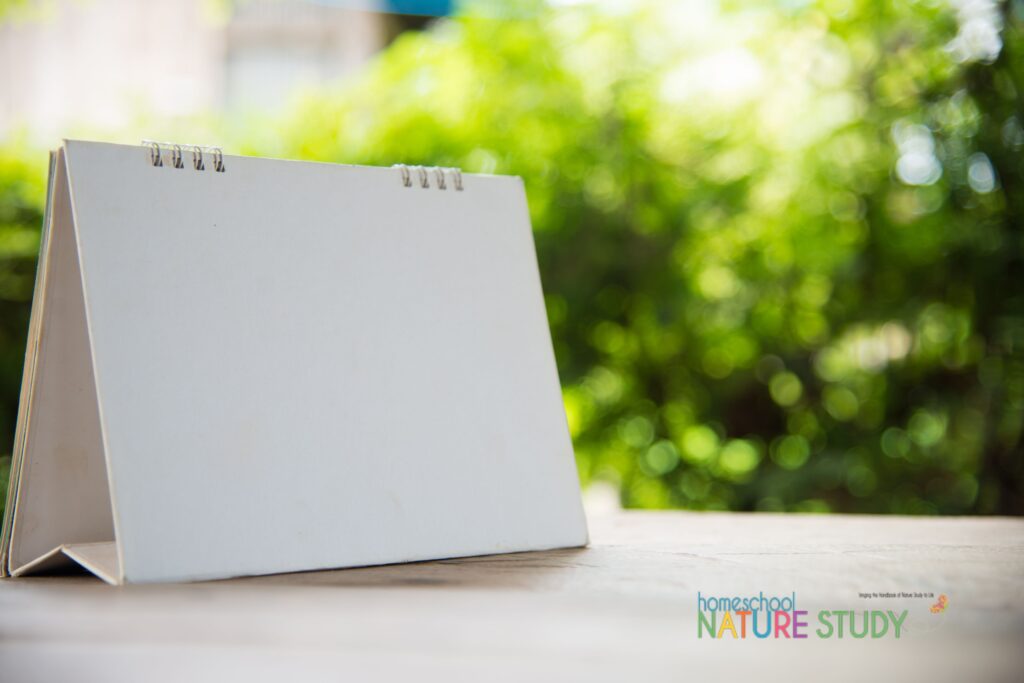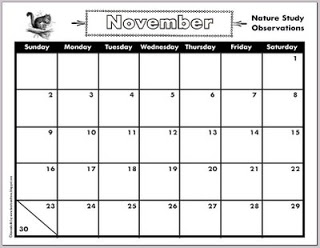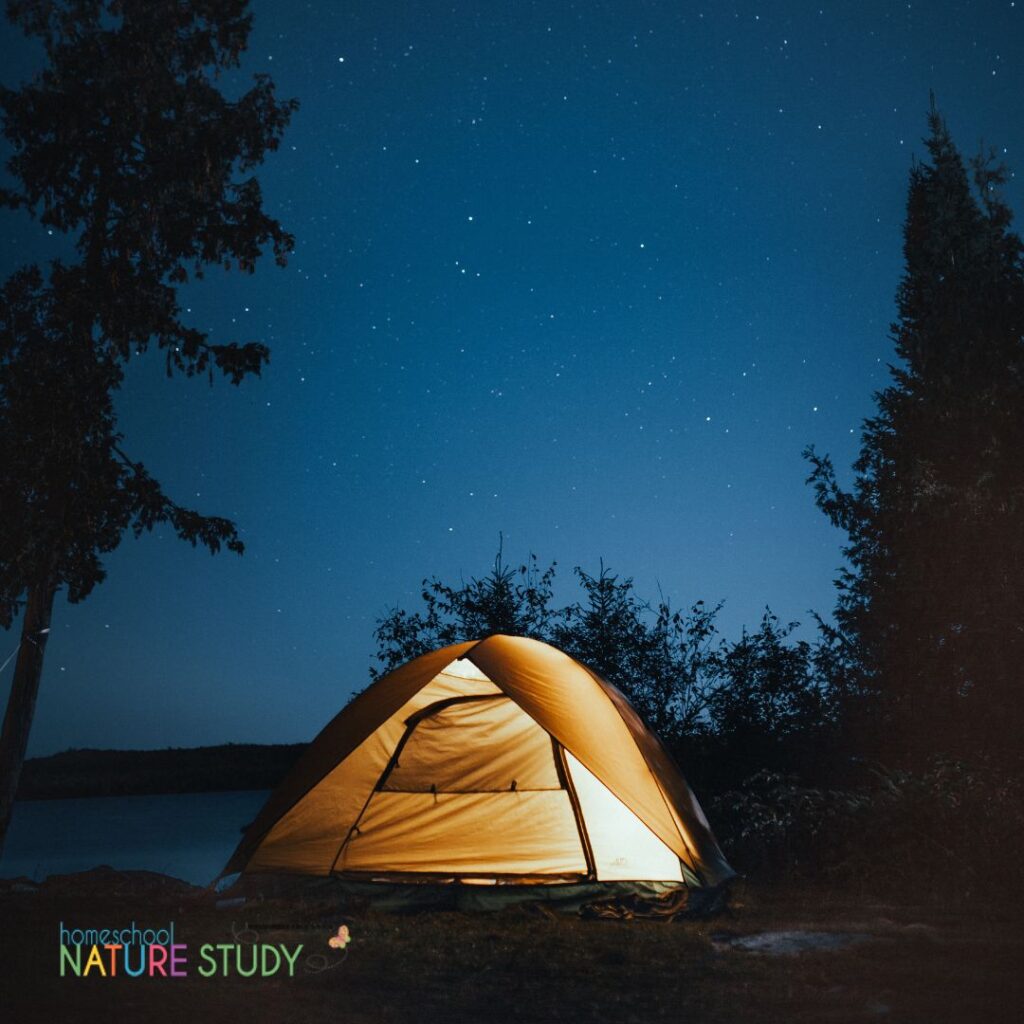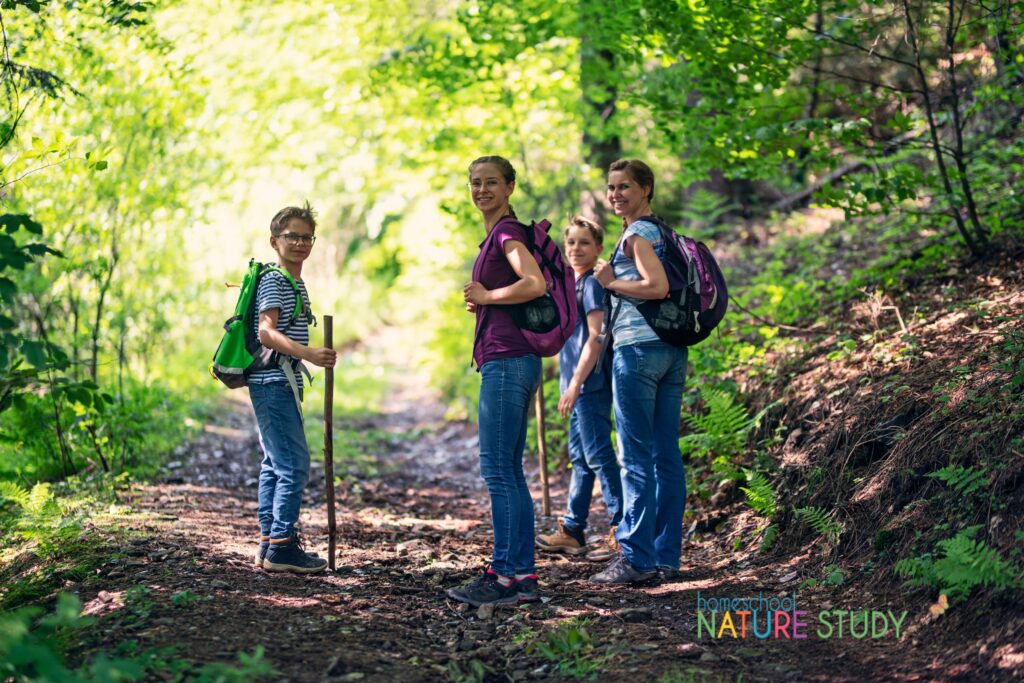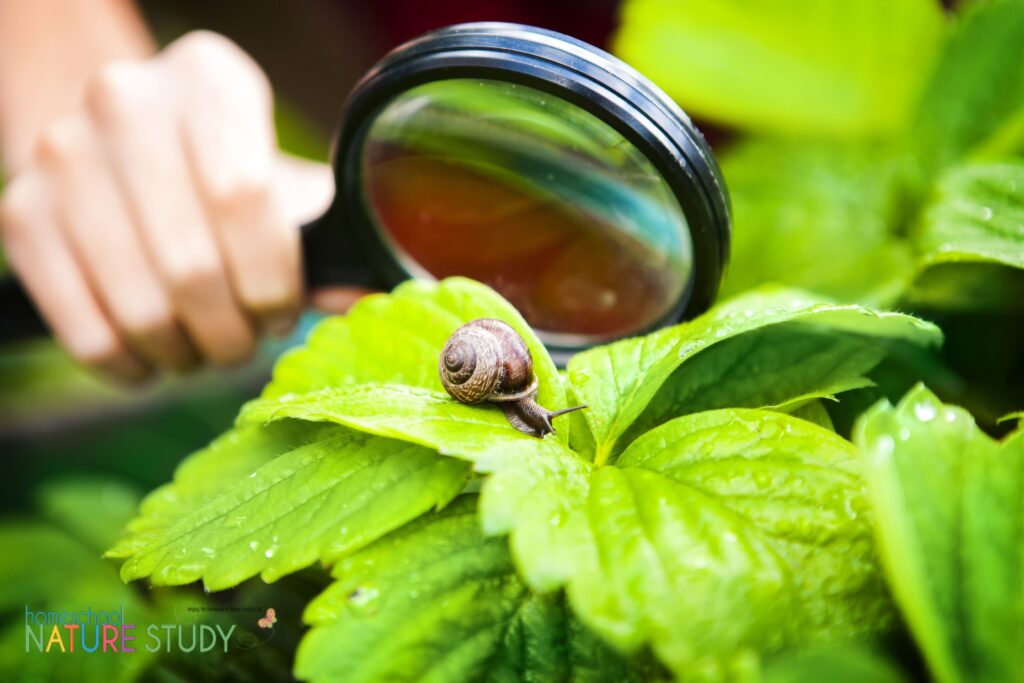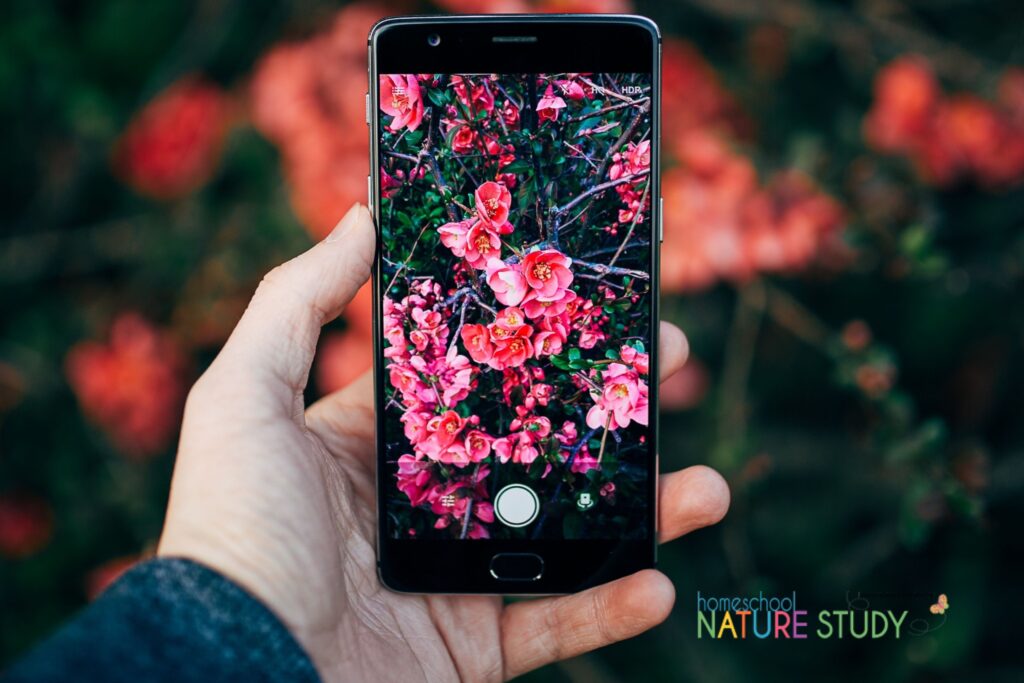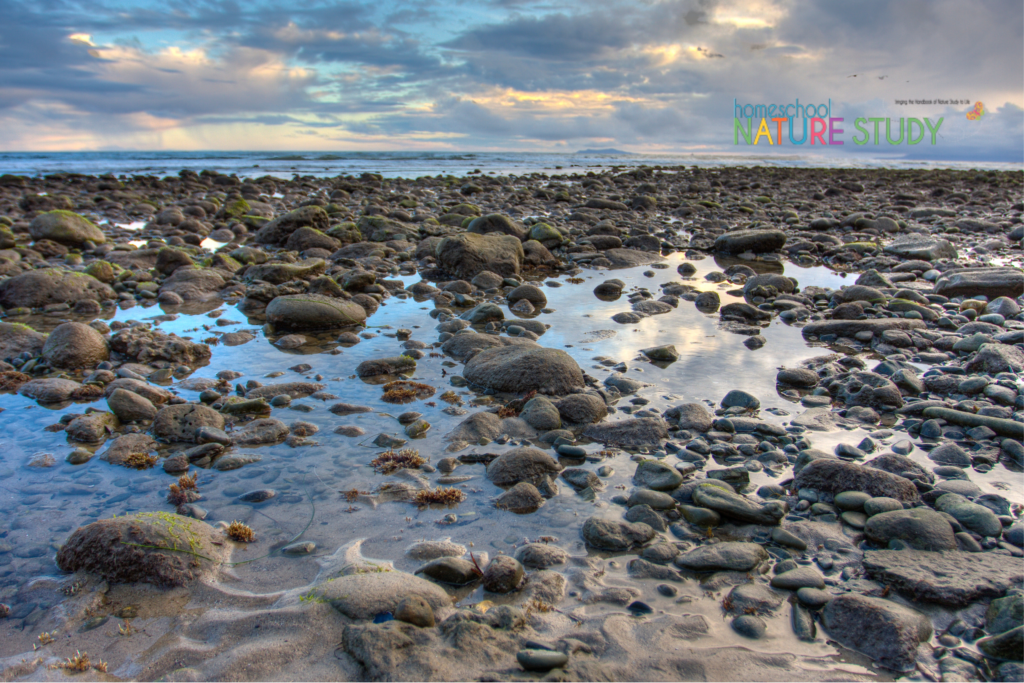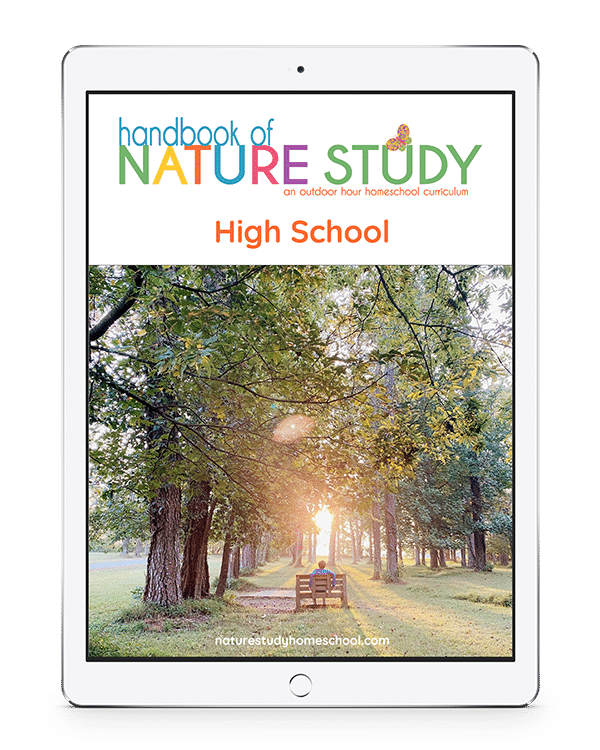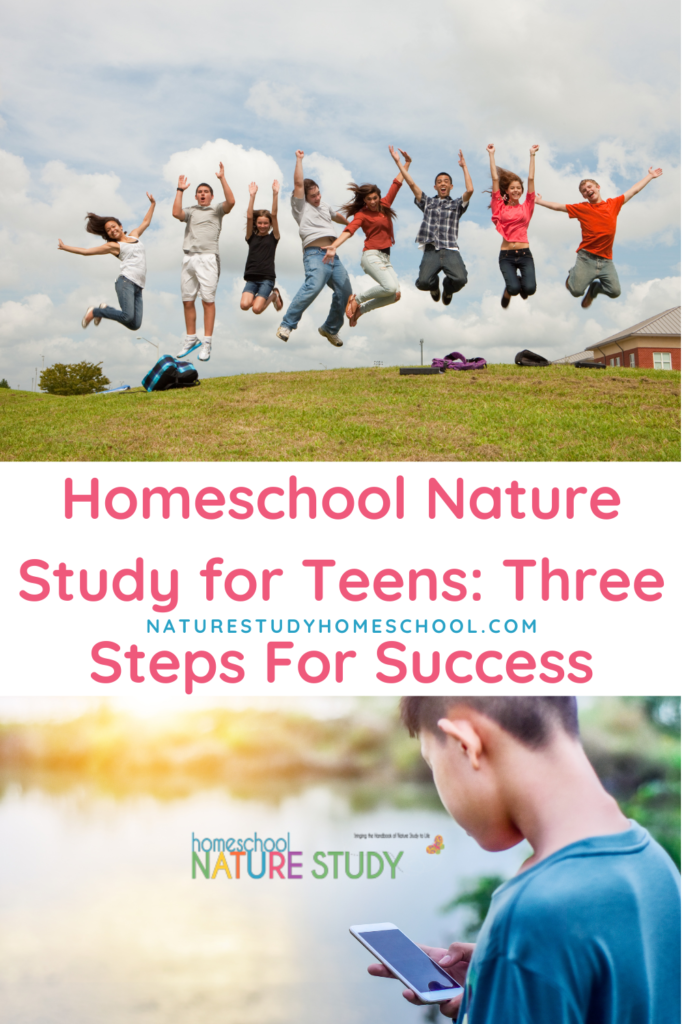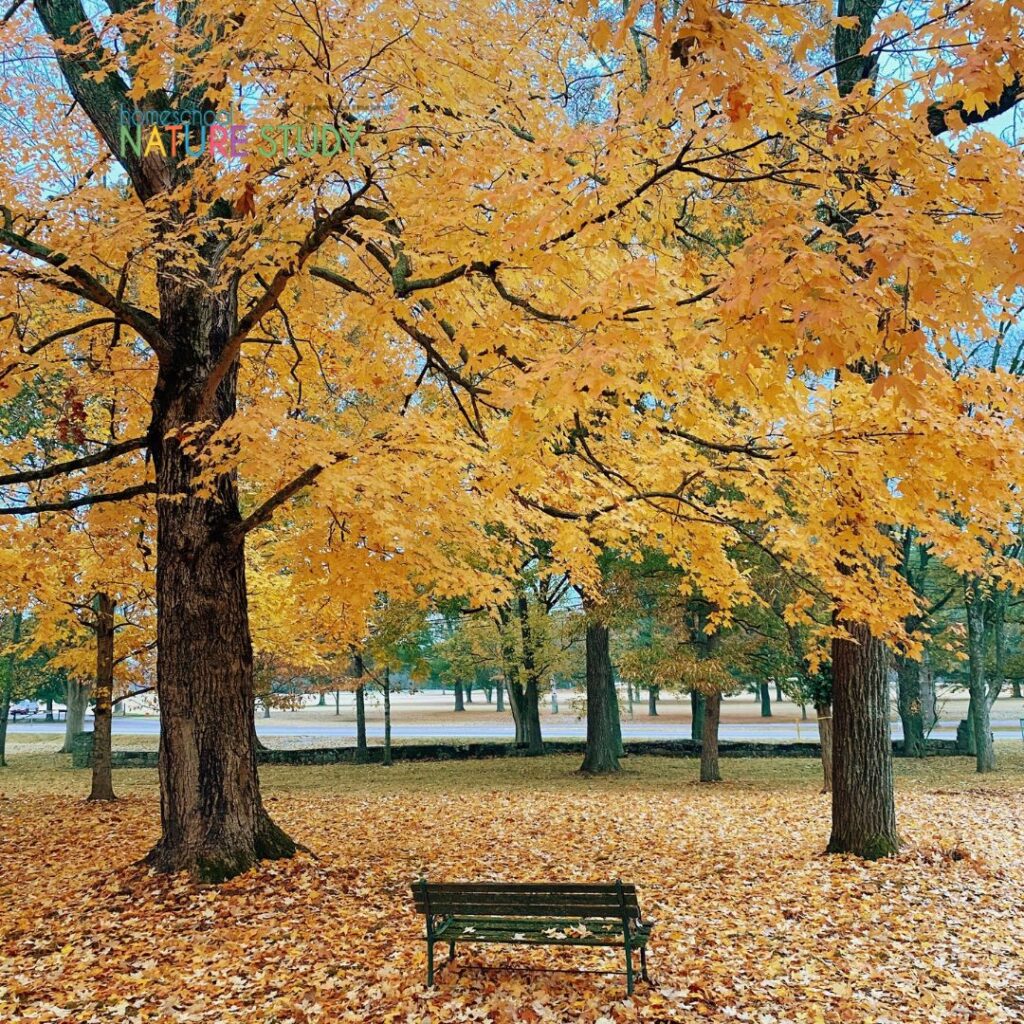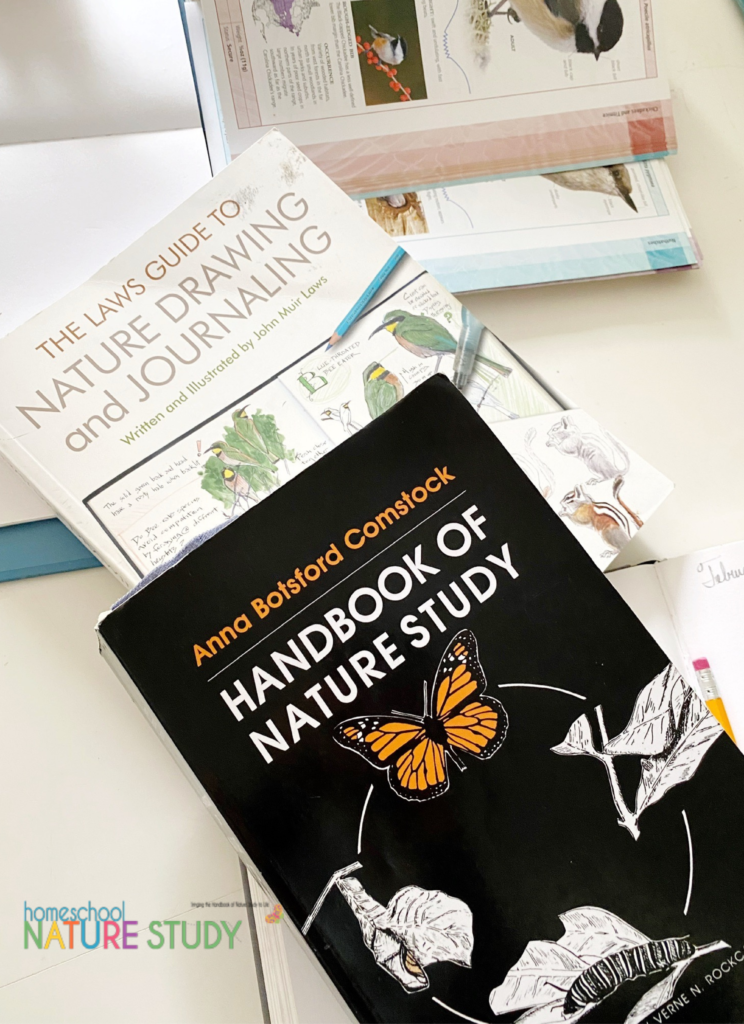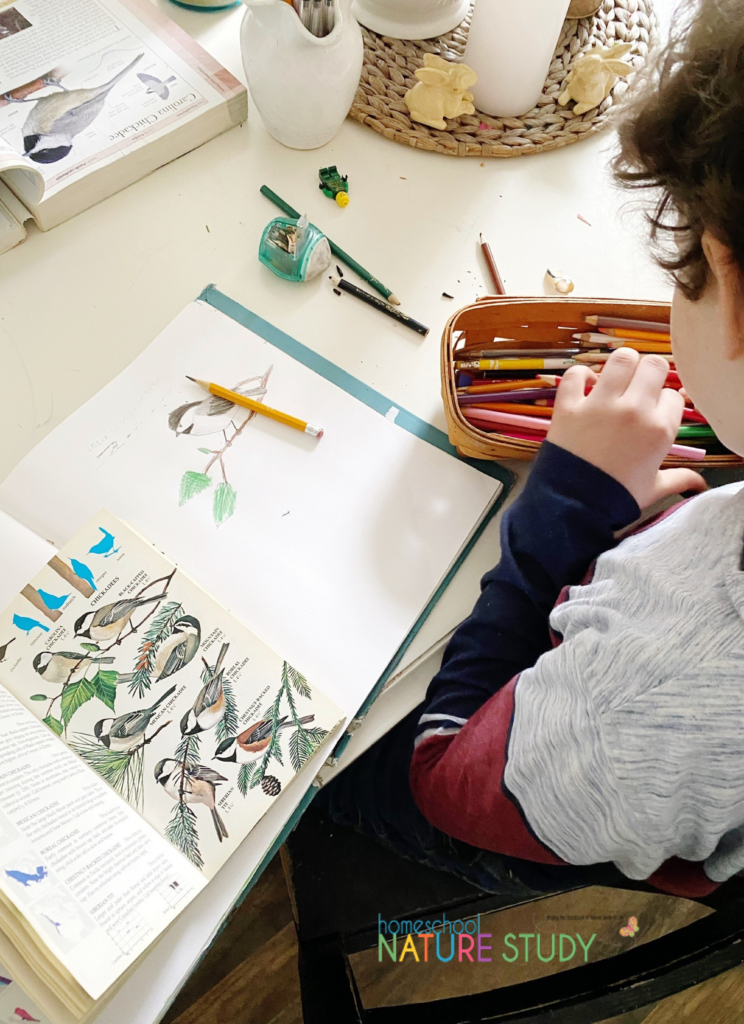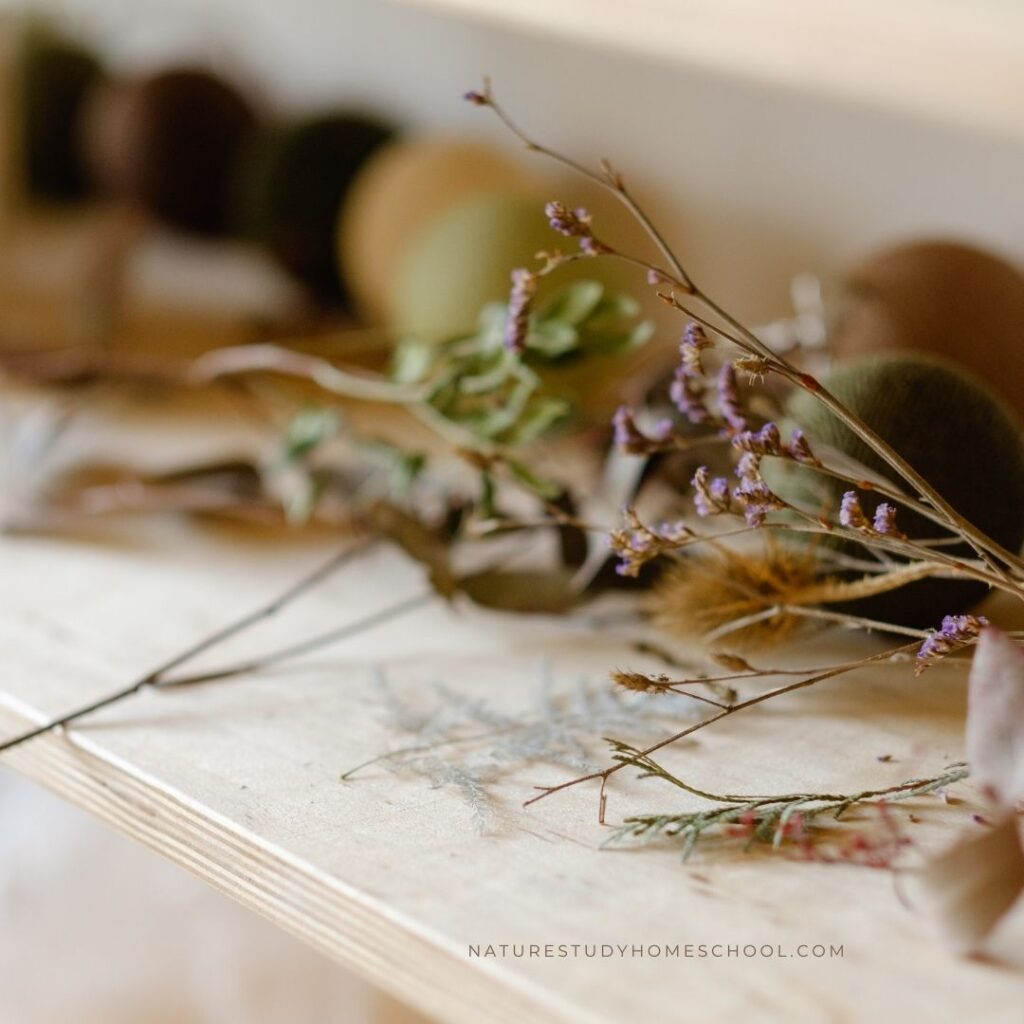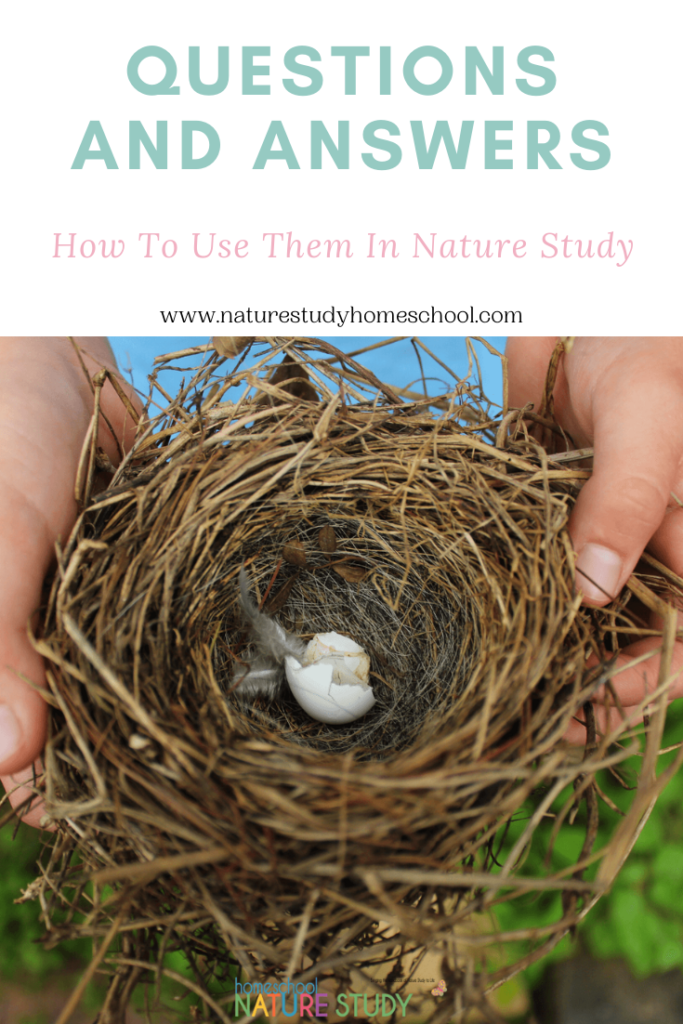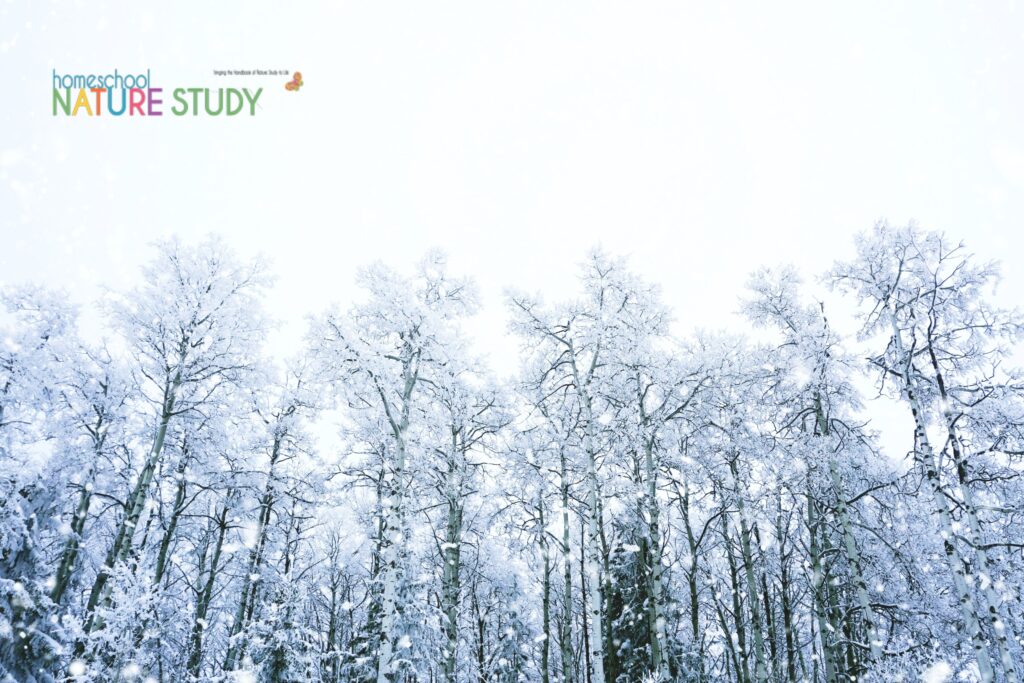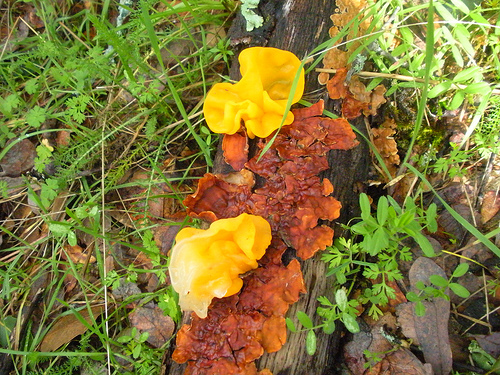While nothing beats experiencing nature first-hand, preschool nature study books are a vital component of our preschool nature studies. We have used both fiction and non-fiction books to introduce a topic, supplement a topic and study a topic in-depth.
Sometimes the books we read have been intentionally picked for nature study, and other times while reading, we come across a nature topic we’d like to learn more about.
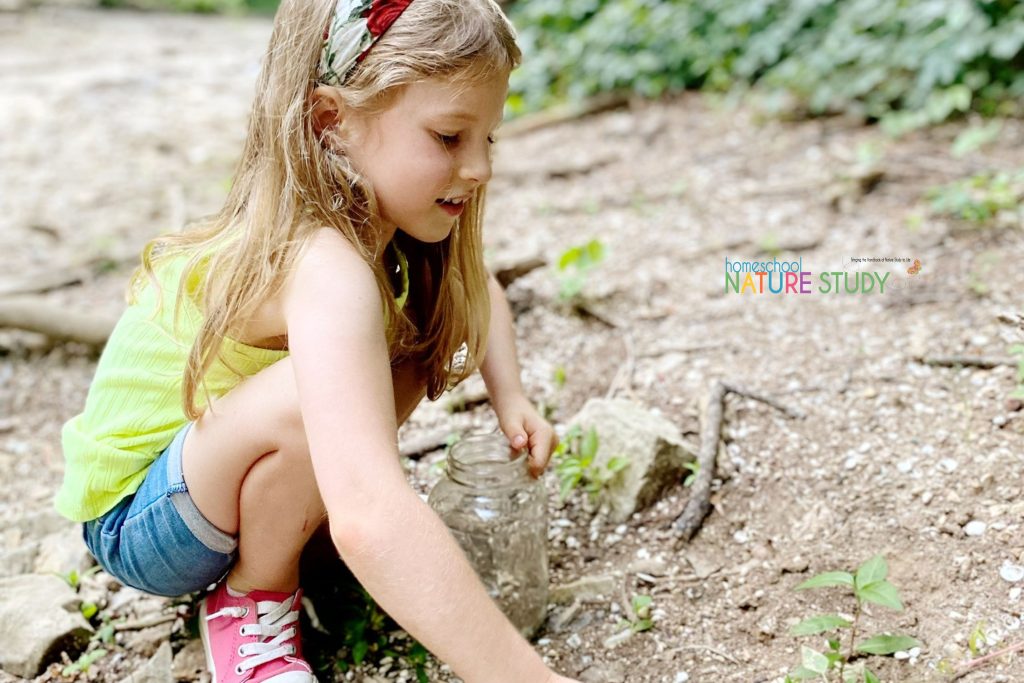
Preschool Nature Study Books
Here are some suggestions for enjoying preschool nature study books in your homeschool.
Introduce a Nature Study Topic:
Recently we read the book Fish Eyes by Lois Ehlert. It is a cute toddler and preschool counting book that read for fun. It also got my young girls wondering about different types of fish. After reading the book they wanted to see real fish. The only local place that I could think of that had many different types of fish on display was our local pet store (nature study doesn’t always have to happen outdoors!) We observed the fish and ended up purchasing a small tank and 2 guppies so we could continue our observations at home.
Sometimes a book that wasn’t intentionally picked for nature study can be used as a springboard for further nature studies. Of course you can also pick a quality picture book to intentionally introduce a topic.
Supplement a Topic with Nature Activities:
Once we had our tank set up, we printed out our fish nature journal and watched our new pets. To help supplement our observations, I picked up a few non-fiction picture books about fish. Our favorite book was What’s It Like to Be Fish? by Wendy Pfeffer. It was the perfect amount of information for young children. Explore even more Fun Fish Activities for Preschoolers!
How To Study a Nature Topic with Preschoolers:
When we want to go more in-depth, we usually turn to field guides and The Handbook of Nature Study for more information. In order to help my children delve deeper, I will gather various resources and set up a book basket on that topic. This basket is accessible at all times to encourage independent learning and exploration. I might also put in items relating to the study and tools to help them observe on their own (such as binoculars and magnifying glasses.)
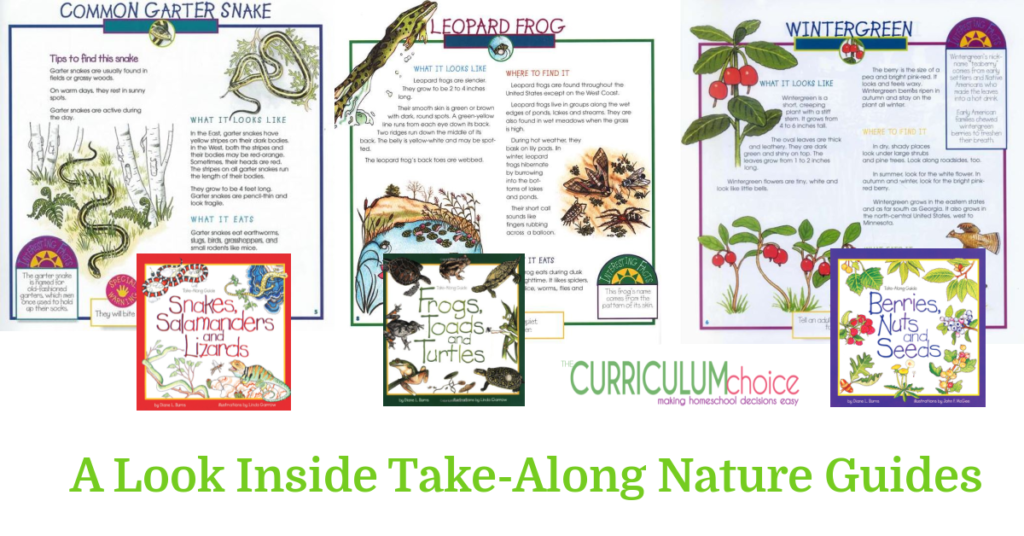
A List of Preschool-Age Picture Books To Introduce and Supplement Seasonal Nature Studies:
Preschool Nature Study Books For Any Time of Year:
- Backyard Books by Judy Allen and Tudor Humphries
- Outside your Window A First Book of Nature by Nicola Davies
- James Herriot’s Treasury for Children
- Take Along Nature Guides
- Out of School and Into Nature: The Anna Comstock Story
- Eric Carle books
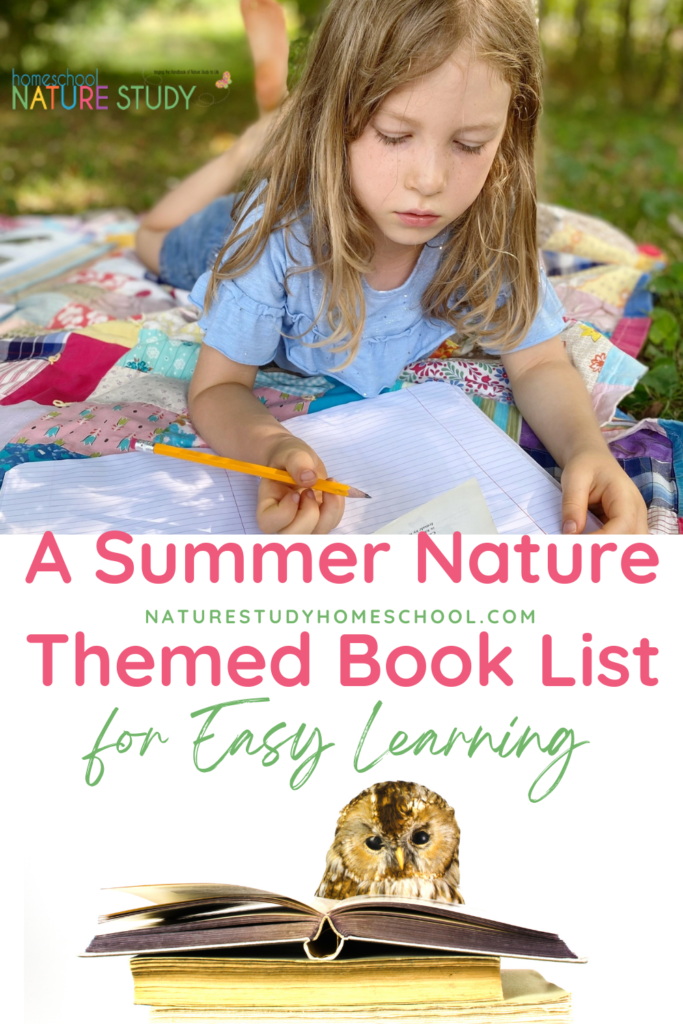
Summer Preschool Nature Books:
- In the Garden: Who’s Been Here? by Lindsay Barrett George
- Jack’s Garden by Henry Cole
- A Summer Nature Themed Book List for Easy Learning
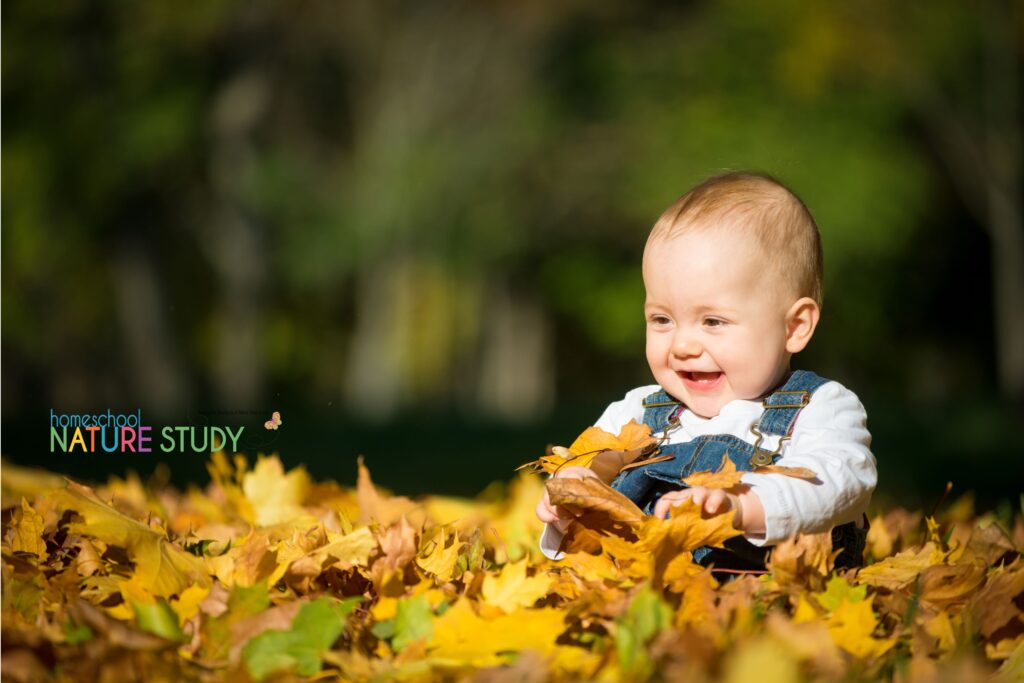
Preschool Nature Study Books for Fall
- Leaf Man by Lois Ehlert
- Fall Walk by Virginia Brimhall Snow
- The Very Busy Spider by Eric Carle
More: Fall Nature Study Ideas for Preschoolers
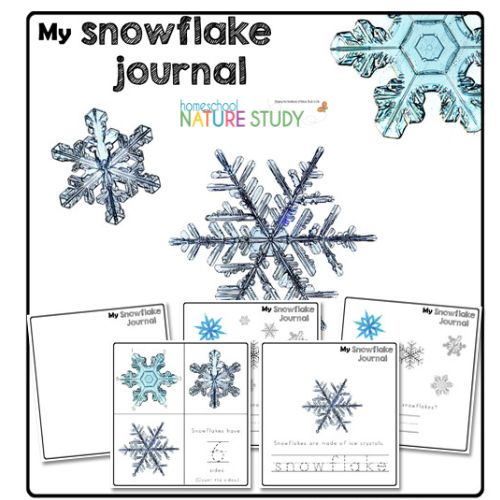
Winter Preschool Nature Study
- Big Tracks, Little Tracks by Millicent E. Selsam
- Animals in Winter by Henrietta Bancroft
- 20 Winter Snow Picture Books
- Preschool Snow Activities and Printable Journal
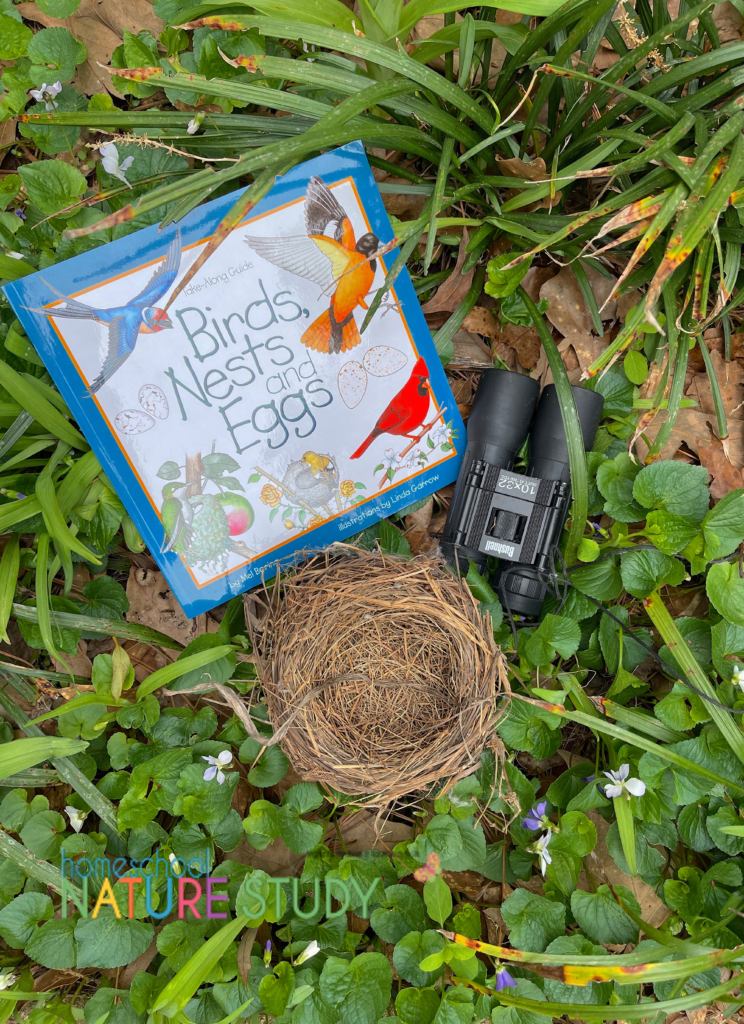
Spring Preschool Nature Books
- The Carrot Seed by Ruth Krauss
- Birds, Nests & Eggs by Mel Boring
- Planting a Rainbow Book Activities
MORE: Spring Nature Study: Activities, Books and More For Your Homeschool
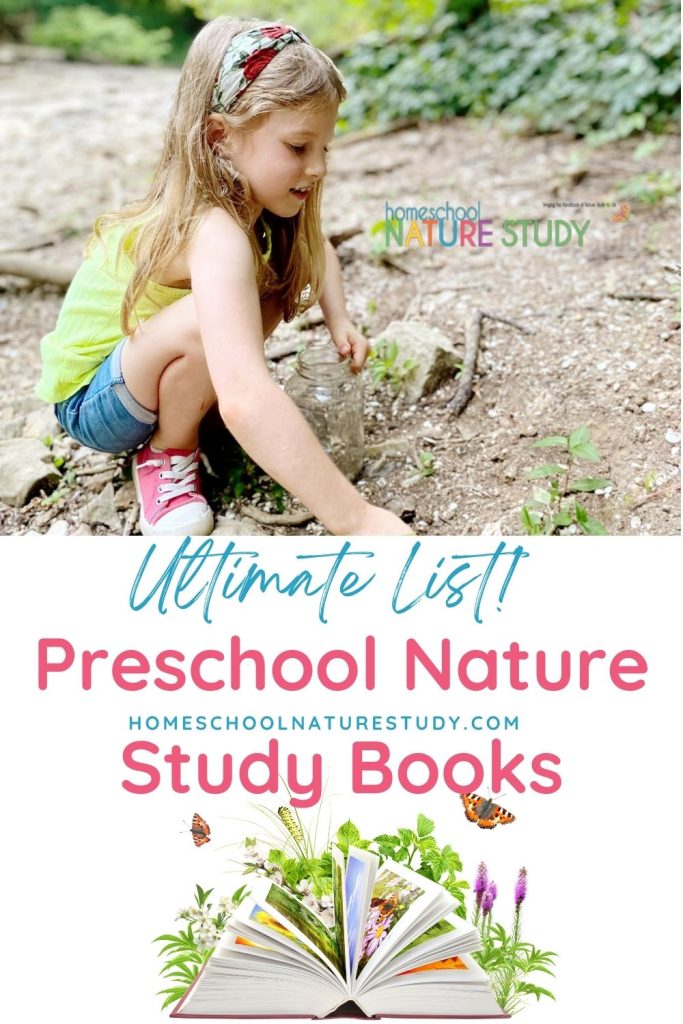
More Preschool Nature Study Activities
Enjoy these fun ideas for learning!
- Picture Books in Nature Study: A Parent’s Guide
- 7 Fun Science Experiments for Preschoolers
- 5 Ways to Teach Preschoolers About Weather
- Learning About Seeds: Preschool Activities
Even MORE Favorite Nature Books for Your Homeschool Nature Studies
Toddler and Preschool Nature Study Printables
Do you like the idea of involving young children in nature study but not sure how to start? Do you need a little help being intentional with your nature studies? Nature Study Printables is full of printable tools for you to use to get young children observing and talking about nature!
Preschool Nature Study with Homeschool Nature Study Membership!
Enjoy ALL of our preschool nature studies plus access to the Outdoor Hour Challenges curriculum for the whole family in Homeschool Nature Study Membership. Find out more about our Delightful Preschool Nature Study Plans for Your Homeschool.
Be inspired. Be encouraged. Get outdoors!

By Maureen Spell, a long-time contributor to the Outdoor Hour Challenges. Maureen helps Christian mompreneurs operate their business from a place of joy, purpose, and excellence because they are clear on how their business is serving their family and others. As a homeschool mom, she believes success at home AND business without the mom-guilt, stress and burn-out is possible! Outside of work, she loves having good conversations over a hot chai or GT Gingerberry kombucha and spending time with her husband and seven children. Visit her at MaureenSpell.com

